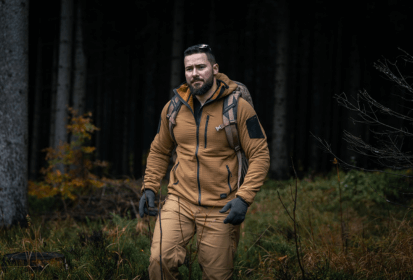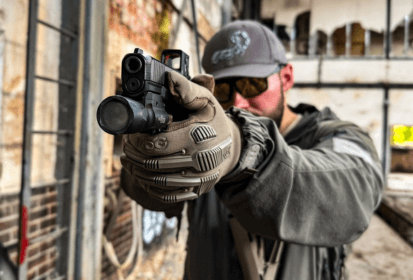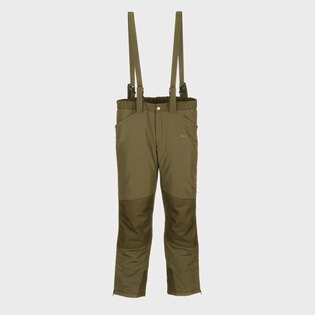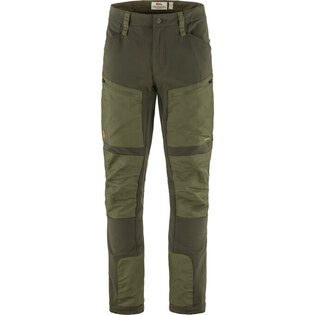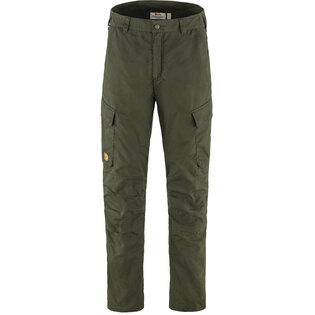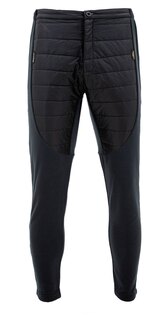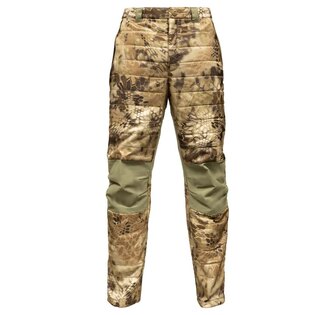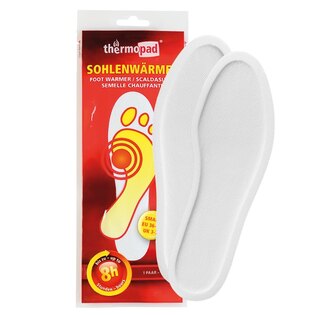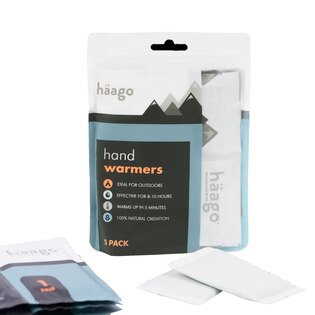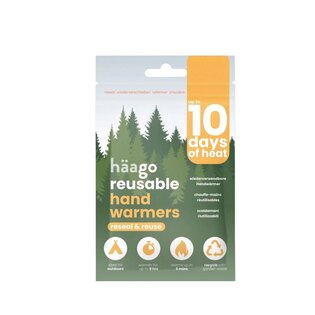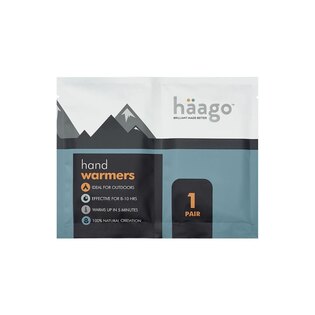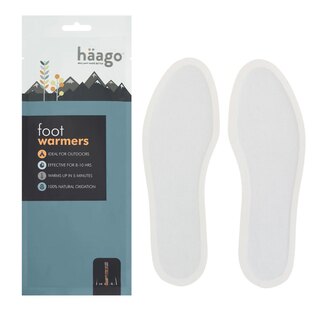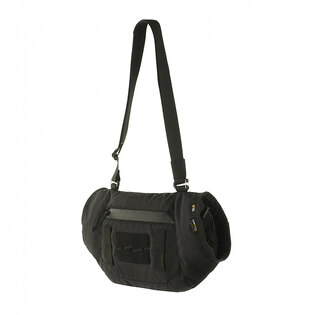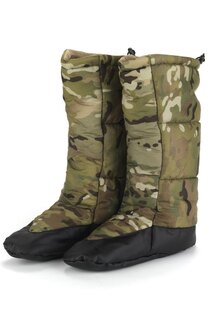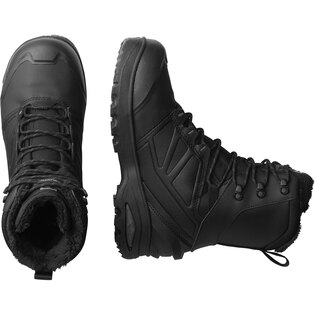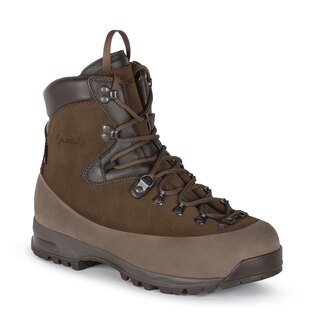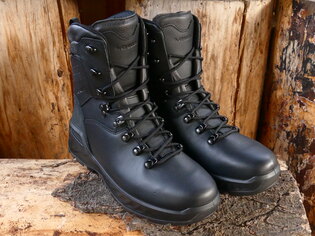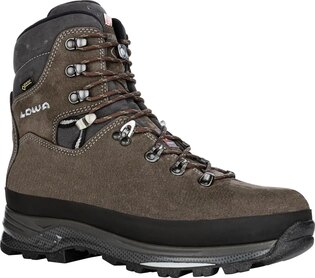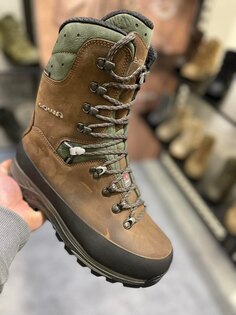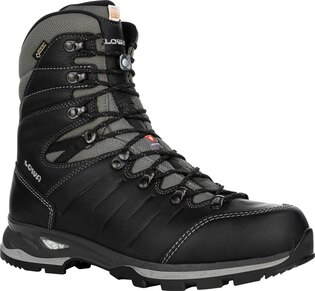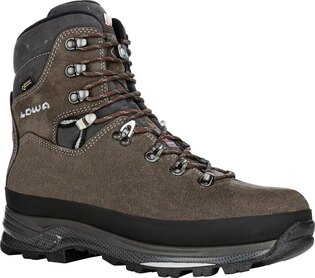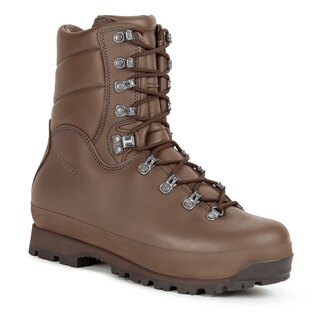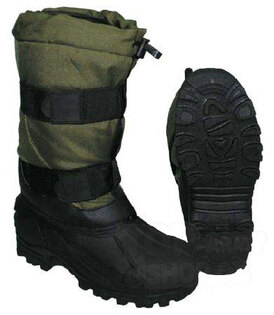What rules must you follow when walking in deep snow?
A walk through a snow-covered landscape with a greater snow cover loses its romantic touch and becomes a physically demanding activity. In particular, the ascent up a steep slope is not only exhausting but also dangerous. Therefore, it is important to follow some basic rules.
Ascending
Climbing uphill in the snow is always challenging. Especially if it's a steep slope and deep drifts. To exert as little effort as possible and reach your destination safely, it's important to choose the right climbing style and equip yourself appropriately, taking into account the type of snow and the slope gradient.
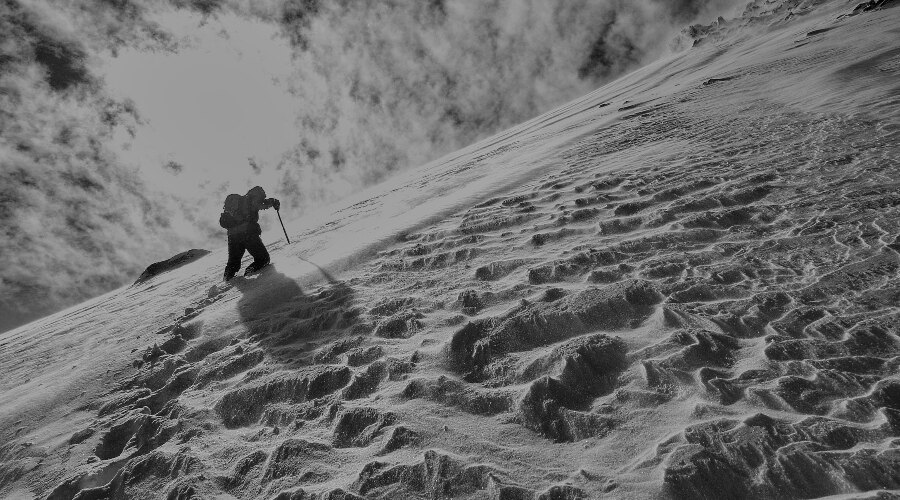
Use telescopic poles to assist when walking up a steep slope.
Ascending in soft snow
The main problem when ascending in soft snow is that you immediately sink into it. With every step, you have to lift your foot high, making walking very physically demanding.
- Keep a wider footprint at shoulder width - you will get better stability when walking.
- At the moment when you lift one leg, the other leg must stand firmly until you transfer your weight to it. Therefore, when stepping on the snow, first smother the snow under the shoe and only then transfer the weight to the foot.
- Do not lean or lean forward - keep the center of gravity of the body vertically above the steps.
- Make the steps slightly inclined towards the slope.
- Climb the gentle slope in serpentines.
- Climb the steep slope in a fall so that you do not disturb the snow layer and the snow does not start to break off and slide under your feet.
- You can overcome a steep slope better if you help yourself with your knee and shin - press the snow with the knee of the outstretched leg and then you can step into its imprint - thanks to this, you do not have to lift your legs too high.
- Telescopic poles will help you keep your balance.
- Keep an ice axe in your hand or close at hand at all times
Ascending in extremely deep soft snow
- In case of extremely deep snow, in which you could sink completely, you can only ascend on stepped platforms.
- At thigh level, slap the platform with your hands.
- Slide onto the platform and kneel on it. Lighten up by digging your hands into the snow in front of you. Slowly shift most of your weight to your knees on the platform.
- Shovel the snow in front of you with your hands and start creating another step half a meter higher.
- Lean on the finished step with your hands and slowly stand on the lower step.
- Sink your hands into the snow above you again, leave the lower rung and drop to your knees on the higher rung.
- You can use ice axes, which stick the axes into the snow perpendicular to the snow surface.
- Repeat the entire procedure until you have passed the section, as the nature of the terrain makes it almost impossible to return.
Walking on firn
- Put crampons on your boots for climbing on hard firn.
- On softer firn, you can kick steps with the toes of your shoes.
- Keep your feet shoulder-width apart, kicking your steps with an incline so your foot doesn't slide backwards.
- If the vultures cannot dig with the tips of their shoes, proceed in the serpentines slightly sideways to the slope.
- Dig the steps with the edge of the shoe, you can also make several steps in a row to create a sufficiently deep step, allowing the entire surface of the shoe to be built.
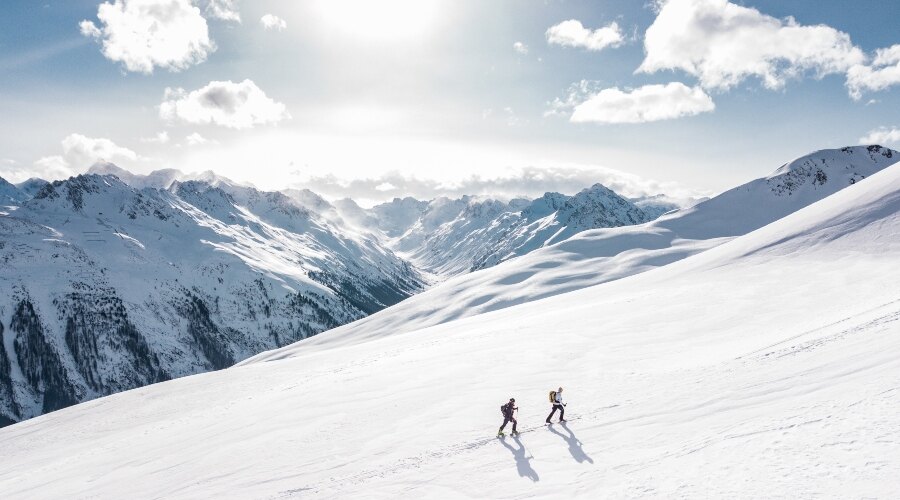
Hiking to the mountain ridge requires appropriate equipment.
Using an ice axe and crampons
- An ice axe is particularly necessary in terrain where you risk a dangerous fall. You can use it to brake when sliding down a slope or when falling, and to cut steps.
- Crampons should also be part of the standard equipment when progressing in deep snow.
- The steps must be inclined to the slope so that the foot does not slip off them. Make them from above with vertical parallel walls so that the step can accommodate the instep, the ankle and possibly the lower leg (when descending).
- At the beginning, dig two steps at knee level so that one step is slightly higher. The steps should look like a naturally trodden track.
- Then dig two more steps at waist level and move up one step.
- Dig the third row of steps.
How to use crampons correctly?
When walking with crampons, be careful to ensure their spikes do not catch on your pants or gaiters, causing you to fall. This is why pant legs should be narrower. There is also a risk of the crampons catching on the shoelace or strap on the other foot.
Snow can accumulate on the crampon frame, exceed the length of the spikes, and you may slip. Snow accumulation can be reduced by using rubber soles that attach to the crampons from below between the spikes.
When walking with crampons, proceed slowly and maintain a wider stance shoulder-width apart.
When walking on flat terrain with crampons, transfer your weight from heel to toe. On a steep slope, step flatly with all the points. Do not step on the side edge of the crampon, as there is a risk of twisting your ankle. On a very steep slope, use the front points of the crampons, digging them into the snow.
Descending on snow
From a gentle to moderately steep snow slope, descend with your back to the slope; from a steep slope, descend facing the slope.
Descending facing away from the slope
- It is very important to keep your balance when descending. Therefore, walk with a wider footprint and keep your center of gravity above the step.
- When stepping down, keep the toes of your shoes raised, dig your foot in with your heel and lean your torso slightly forward.
Descending facing the slope
- Bend one leg and extend the other down and kick to form a step.
- Then switch legs and repeat the process.
Descending with crampons
- A descent with crampons in soft snow is the same as a descent without crampons. However, the back leg is placed higher than when walking on the level and there is a risk of the crampons hooking on loops or objects that are attached to your waist.
- Use the handle of the ice axe to knock the snow off the snow.
- When descending with the crampons in hard snow with their backs to the slope, lay the crampons flat and drive them into the snow with all the spikes.
- On a very steep slope, descend facing the slope and dig in the front spikes of the jacks with the toes of your boots.
- If the terrain allows it, you can go down the slope on your butt and brake with an ice axe. You should take off your crampons before going down so they don't get caught on the snow and you don't somersault.
Along the snow ridge
- There may be drifts of snow on the snow ridge that can break away from under you.
- On a ridge with a switchback, never go over the top of the ridge. Proceed on the opposite side of the slope to where the overdraft is leaning.
- The route when advancing on the ridge should be variable with respect to the terrain.
- Walk around the snowdrift on the side with a gentler slope.
- Overcome the steps in the ridge with a frontal ascent along the edge of the ridge or bypass the step with a traverse.
Passing through snow couloirs
- If the snow is firm and stable, snow-covered rock grooves can be used as a corridor.
- However, with unstable snow there is a risk of avalanches.
- Falling stones, which are released especially when the snow melts, are also a risk.

In deep snow, you will move better with snowshoes.
Snowshoeing
- Snowshoes can make moving in deep snow much easier. Snowshoes are suitable for short and long trips. Walking with snowshoes is less physically demanding and you can overcome more demanding terrain with them.
- You can use poles when snowshoeing. They are especially suitable in more demanding terrain and with a higher layer of new snow.
- Poles help you keep your balance and make it easier to move forward.
Readers are further interested
